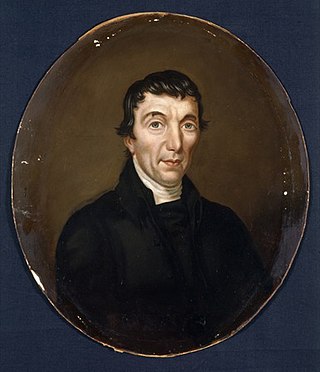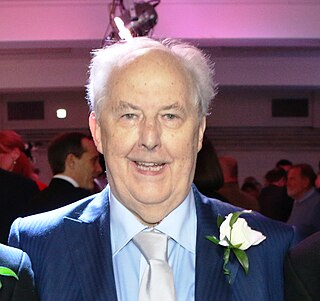Related Research Articles
The Presbyterian Church of Wales, also known as the Calvinistic Methodist Church, is a denomination of Protestant Christianity in Wales.
Trefeca, located between Talgarth and Llangorse Lake in what is now south Powys in Wales, was the birthplace and home of the 18th-century Methodist leader Howell Harris (1714–1773),. It was also the site of two Calvinistic Methodist colleges at different times; the first sponsored by Selina, Countess of Huntingdon in the late eighteenth century; the second supported by the Welsh Calvinistic Methodist Connexion in the later nineteenth century.

Lewis Edwards was a Welsh educator and Nonconformist minister.

John Elias was a Christian preacher in Wales in the first half of the 19th century, as part of the Welsh Methodist revival. His preaching was noted as being exceptionally powerful, "as if talking fire down from heaven". On one occasion it is said he preached to a crowd of 10,000 people. He was a strict High-Calvinist who believed in the literal truth of the Bible. At one stage he argued strongly for the doctrine of election. He came to be known as Y Pab Methodistaidd in Welsh because of his forthright views. Despite his wide interests, he was a religious conservative who opposed all forms of political Radicalism as well as the assertion, popular at the time amongst Nonconformists in Wales, that "the voice of the people was the voice of God".

William Thomas, bardic name Islwyn, was a Welsh language poet and Christian clergyman. His best known poems were both called Yr Ystorm ['The Storm'], and were written in response to the sudden death of his fiancée.

David Benjamin Rees is a Welsh and English-language publisher, author, lecturer and minister in the Presbyterian Church of Wales since 1962. He is a leader of the Welsh community in Liverpool, and heads one of the city's five remaining Welsh chapels. His small publishing house, Modern Welsh Publications Ltd, was established in 1963 and from 1963 to 1968 it operated from Abercynon in the Cynon Valley of South Wales. Since 1968 it has operated from Allerton, Liverpool and is the only Welsh language publishing house still operating in the city of Liverpool.
This article is about the particular significance of the year 1891 to Wales and its people.
This article is about the particular significance of the year 1887 to Wales and its people.
This article is about the particular significance of the year 1849 to Wales and its people.

The United Theological College located in Aberystwyth, in the county of Ceredigion in mid Wales, is a Grade II listed building which was the ministerial training college of the Presbyterian Church of Wales from 1906 to 2003 and an associate college of the University of Wales.
This article is about the particular significance of the year 1831 to Wales and its people.
This article is about the particular significance of the year 1826 to Wales and its people.
Thomas Jones, called "Thomas Jones of Denbigh" to differentiate him from namesakes, was a Welsh Methodist clergyman, writer, editor and poet, active in North Wales.
This article is about the particular significance of the decade 1790 - 1799 to Wales and its people.

Y Traethodydd is a quarterly cultural magazine published in the Welsh language covering historical, literary and theological topics. It is the oldest magazine in Wales and the oldest magazine in the Welsh language still in publication.

Roger Edwards D.D. was a Welsh Calvinistic Methodist, who later became prominent in Wales as a press editor and publisher.

Hugh Hughes (1790–1863) was a Welsh painter, engraver and writer.

William Rowlands (1802–1865), known as Gwylym Lleyn, was a Welsh bibliographer and Methodist minister.

Athraw was a Welsh language periodical published in Llanidloes, Wales by Humphrey Gwalchmai, a local Methodist minister.
Owen Prys was a Calvinistic Methodist minister and first Principal of the United Theological College in Aberystwyth in Wales (1906–27) and Moderator of the Presbyterian Church of Wales in 1910. The Welsh scholar Sir Ifor Williams described him as one of the most powerful preachers of the 20th-century.
References
- ↑ "John Parry". Dictionary of Welsh Biography . National Library of Wales.
- 1 2 3 Alan Conway (1 January 1961). The Welsh in America: Letters from the Immigrants. U of Minnesota Press. p. 331. ISBN 978-0-8166-5737-7 . Retrieved 13 April 2020.
- ↑ Davies (2008), p. 433.
- ↑ Davies (2008), pg 637.
- ↑ Davies (2008), pg 85.
- ↑ "Sir Hugh Owen". Dictionary of Welsh Biography . National Library of Wales.
- ↑ Davies (2008), pg 109.